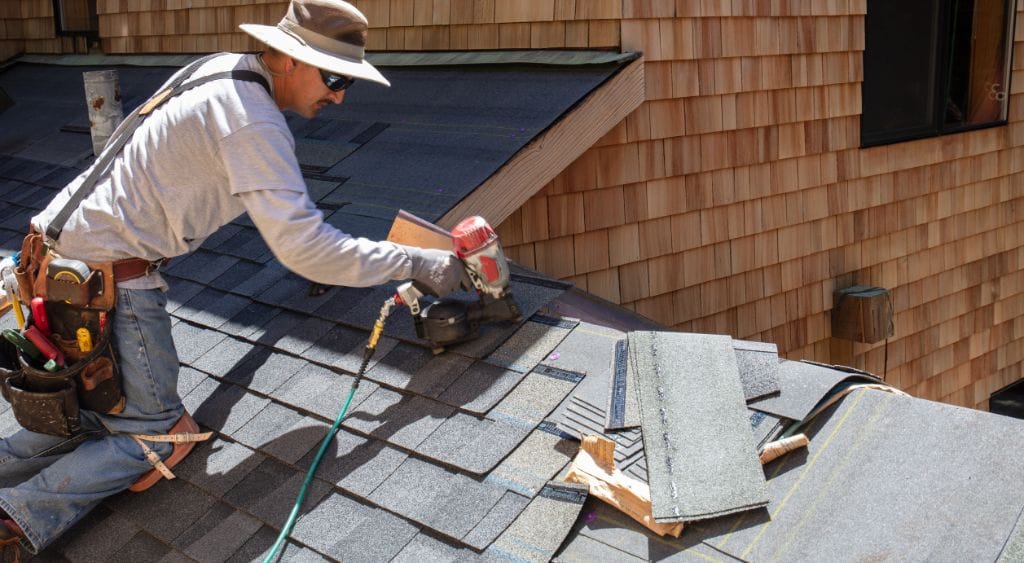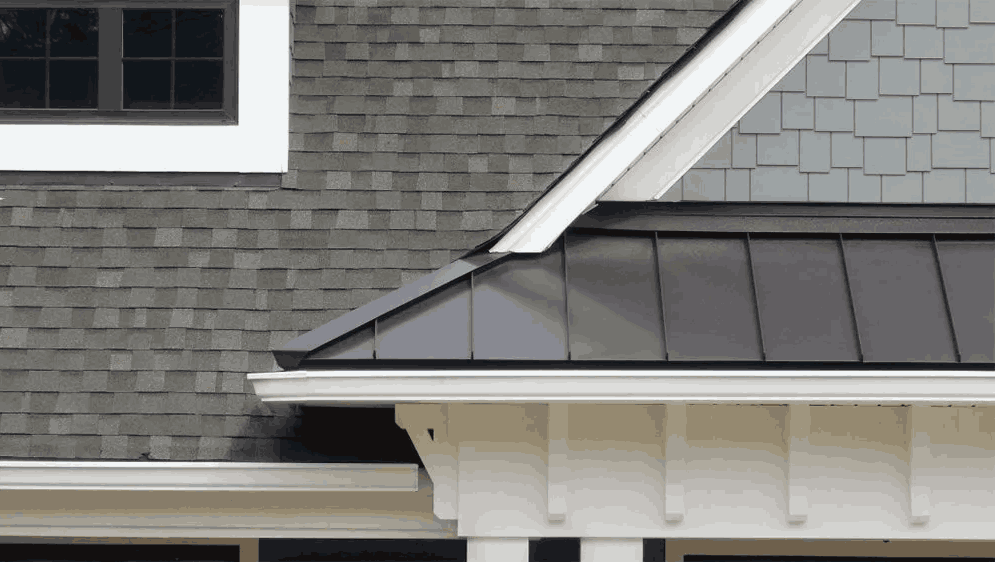
Arlington, TX, may not have the harshest winters, but its blazing-hot summers, occasional stormy seasons, and sudden temperature swings can take a toll on your roof. Proper roof care is essential for extending the lifespan of your roofing system and preventing costly damage to your home. While certain tasks can be tackled by any handy homeowner, some issues require professional expertise. Read on for DIY roof care tips that Arlington homeowners can handle safely—and clear guidance on when it’s time to bring in a pro.
Why DIY Roof Care Matters in Arlington
1.1 Hot Summers and UV Exposure
Long stretches of triple-digit heat can prematurely age shingles and compromise sealants. Routine maintenance helps mitigate potential damage caused by intense sun exposure.
1.2 Storms and Hail
Arlington often sees strong winds, heavy rain, and hail—especially in spring and early summer. Quick checkups after storms can spot damage before it leads to leaks and mold issues.
1.3 Temperature Swings
While the region’s winters are relatively mild, temperature fluctuations can stress roofing materials, causing tiny cracks or gaps that may let moisture in over time.
Understanding these climate challenges will help you prioritize and schedule regular DIY maintenance tasks to keep your roof in tip-top shape.
Safe DIY Roof Maintenance Tasks
2.1 Gutter Cleaning
What You Can Do:
- Clear Leaves and Debris: Clogged gutters cause water to back up under the shingles or along the fascia, leading to rot and leaks.
- Inspect for Damage: Look for holes or rust in the gutter system.
- Direct Downspouts Properly: Make sure water flows several feet away from your foundation.
Why It’s Important:
- Prevents water damage to your roof, siding, and foundation
- Ensures smooth water flow during heavy rains
Safety Tip: Always use a sturdy ladder on level ground. Consider a ladder stabilizer for added support, and never overreach—climb down and reposition your ladder as needed.
2.2 Basic Roof Inspection from the Ground
What You Can Do:
- Look for Missing or Curling Shingles: Use binoculars to scan your roof without climbing onto it.
- Check for Visible Damage: Cracked flashing, bent vent covers, or obvious holes can point to trouble spots.
- Examine the Attic: Head inside on a sunny day and look for light shining through or signs of moisture on rafters or insulation.
Why It’s Important:
- Early detection of problems reduces the risk of extensive (and expensive) repairs
- Identifies areas that may need closer professional attention
Safety Tip: Keep your feet on the ground unless you’re comfortable with heights and have the proper safety gear. Roof surfaces can be slippery or unstable.
2.3 Removing Debris and Overhanging Branches
What You Can Do:
- Sweep Off Debris: Twigs, leaves, and branches can trap moisture against your shingles. Using a soft-bristle broom or leaf blower while standing safely on a ladder can help.
- Trim Tree Limbs: Keep branches at least a few feet away from your roof to prevent scraping and reduce debris accumulation.
Why It’s Important:
- Minimizes moisture buildup that leads to mold, algae, or rot
- Reduces risk of damage during storms when branches can break and fall onto the roof
Safety Tip: For branches that are too thick or too high, consider contacting an arborist or tree service to avoid injury or accidental roof damage.
2.4 Checking and Maintaining Ventilation
What You Can Do:
- Inspect Soffit and Ridge Vents: Make sure they’re unobstructed by debris, paint, or insulation.
- Feel for Proper Airflow: A well-ventilated attic feels less humid and shows minimal temperature difference from the outside air.
Why It’s Important:
- Proper ventilation reduces heat buildup in your attic, which prolongs your roof’s life and can lower energy costs
- Prevents condensation that leads to mold or wood rot
Safety Tip: If you suspect poor ventilation but aren’t sure how to fix it—especially if it may require additional vents—consult a professional roofer for guidance.
When It’s Time to Call a Pro
3.1 Major Leaks or Water Damage
If you notice persistent leaks, water stains on ceilings, or moldy spots in your attic, a quick DIY patch likely won’t solve the underlying issue. These symptoms could indicate extensive damage to shingles, flashing, or underlayment.
3.2 Structural Concerns
Sagging sections of your roof or rotting support beams can compromise the entire roofing system. Addressing these issues often requires specialized tools, permits, and structural know-how.
3.3 Hail or Storm Damage
After a severe hailstorm or high-wind event, it’s wise to schedule a professional inspection. Hail can create invisible hairline fractures in shingles, leading to leaks months later if not addressed promptly.
3.4 Complex Repairs or Material Replacements
Flashing around chimneys and skylights, replacing large swaths of shingles, and handling specialized materials like metal or tile roofs can be tricky. Unless you have roofing experience, hiring a licensed contractor ensures proper installation and maintains warranties.
DIY Safety Guidelines
Working on or around your roof can be dangerous. Keep these tips in mind:
- Use the Right Ladder
- Opt for a ladder that extends at least 3 feet above the roofline.
- Secure it to prevent slipping.
- Dress Appropriately
- Wear rubber-soled shoes for traction.
- Avoid loose clothing that can get caught on tools or fixtures.
- Work in Good Weather
- Never climb onto a roof during a storm, strong winds, or if the roof is slick from rain or ice.
- Have a Buddy System
- Let someone know you’re working on the roof in case of emergency, or have a spotter help stabilize ladders and hand you tools.
- Know Your Limits
- If you’re uncomfortable with the height or complexity of the task, it’s safer and often more cost-effective to call a professional.
Professional Assistance: How Roofer.com Can Help
At Roofer.com, we understand that Arlington homeowners want to keep their roofs in top shape without breaking the bank. Here’s how we can support your DIY efforts and step in when necessary:
- Expert Inspections: Not sure if that storm caused real damage? Our pros can perform a thorough evaluation, saving you the stress of guessing.
- Preventive Maintenance: We offer seasonal tune-ups and minor repairs, so you don’t have to risk climbing onto the roof.
- Quality Repairs and Replacements: Whether you’re dealing with a small leak or need a full roof overhaul, our licensed and insured team ensures top-notch workmanship.
Final Thoughts
Routine DIY maintenance—like clearing gutters, trimming branches, and doing ground-level inspections—goes a long way toward protecting your Arlington home from heat, storms, and unexpected leaks. But knowing when to call in a professional is just as crucial for your home’s safety and structural integrity.
Ready for a professional roof inspection or advice on those trickier DIY projects? Contact us at Roofer.com today. Our local expertise, commitment to quality, and hassle-free service make us the perfect partner for all your Arlington roofing needs.




